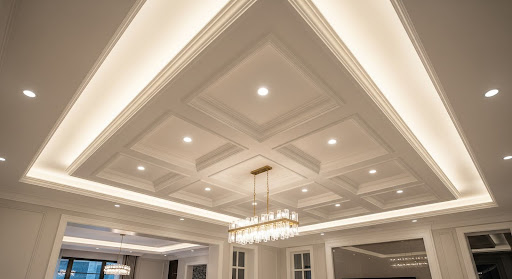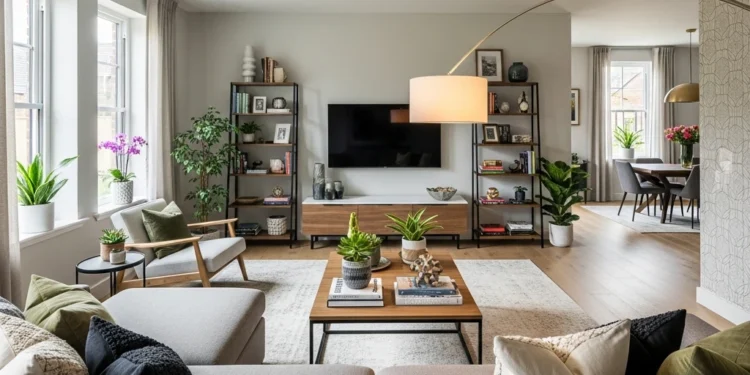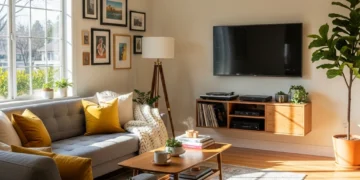When designing interiors, attention is usually paid to walls, furniture and the floor, but the ceiling also affects the atmosphere of a room. The height, finish and detail of a room make the difference between an open, intimate or dramatic room. Homeowners can use innovative ceiling treatments to create some of the most spectacular style and character displays.
Embracing Contemporary Materials
The market has also introduced new solutions to overhead design solutions, such as living room ceiling panels that incorporate functionality with a clean look. The panels cover wiring, enhance sound reduction and add texture to the room and are easy to install. Finishes include simple matte finishes, as well as reflective finishes that increase light. Choosing the appropriate combination brings out the finesse of sophistication and, at the same time, makes it practical.
Minimalist Elegance Through Clean Lines
The contemporary living room tends to lean towards a minimalistic style. Recessed lighting tracks or smooth plaster finish create a sharp appearance that maintains attention on furnishings. The subtle contrasts in paint will underline construction lines without filling up the space. The lack of decoration in this style provides a relaxed modern appearance.
Textured Finishes for Depth
Flat surfaces sometimes feel sterile. Introducing depth through texture adds richness without excess decoration. Options include wood slats, metallic inserts, or fabric-covered panels. These details break up expanses of plain ceiling and create visual interest, drawing the eye upward and making the room feel more layered.
Integrating Lighting Into Design
Lighting transforms how ceilings are perceived. Cove lighting tucked into recessed edges casts a soft glow, while spotlights integrated into panelling provide targeted illumination. Statement pendants suspended from coffered sections add bold character. Considering lighting alongside ceiling finishes ensures harmony rather than an afterthought.
Playing With Colour
Colour choices affect mood as strongly overhead as on the walls. Pale shades keep the atmosphere airy, while darker tones produce intimacy and drama. Contrasting colours between beams and infill sections emphasise architectural rhythm. Metallic paints or reflective finishes catch the light, amplifying brightness in spaces that lack natural illumination.
Geometric Shapes and Patterns
Bold geometry can serve as an architectural focal point. Hexagonal panels, angled sections, or interlocking grids break away from traditional flat surfaces. These forms work particularly well in contemporary interiors, offering individuality without the need for excessive decoration. Patterns add energy and structure, creating a dynamic centrepiece above the living area.
Natural Influences in Ceiling Design
The use of natural materials makes the modern interiors soft. The wooden beamwork is exposed to create a warm atmosphere as bamboo or rattan panelling brings an organic nature inside. Industrial-inspired living rooms can be furnished with stone or concrete finishes that add to the roughness of the design. To create equilibrium between smooth modern features and grounded and sensory surfaces, natural textures are used.
Acoustic and Functional Benefits
Ceilings may be both comfortable and attractive. Acoustic panels decrease the echo, which is quite significant in the open-plan living areas. Hidden ceiling systems conceal ducts, cabling or speakers and have a clean appearance. The combination of functional additions with design attributes has resulted in beautiful and functional rooms.
Elevating Modern Interiors
The art of the ceiling is not only a matter of decoration but also of light, acoustics, and atmosphere. The choice of minimalist plaster to textured panelling, geometrical designs, and natural finishing is just a few examples that can offer the homeowner distinctive living spaces. Ceilings can be used wisely, and ceilings will be a part of the interior design.












